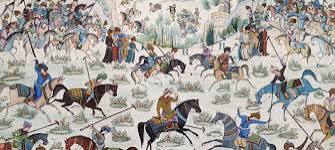- April 24, 2024
- Uncategorized
- Comments : 0
Polo Through Ages: Origin, Curiosities, Legends

Unveiling the Mystique: Polo’s Ancient Roots and Modern Marvels
Polo, a sport synonymous with elegance, speed, and skill, boasts a rich history that spans centuries and continents. From its enigmatic origins in ancient Persia to the lavish palaces of modern-day enthusiasts, the journey of polo is as captivating as the sport itself. Join us as we delve into the fascinating world of polo, exploring its origins, notable curiosities, and legendary figures.
Origins of Polo: A Tale of Ancient Rivalries and Noble Steeds
The precise origins of polo remain shrouded in the mists of time, with historians tracing its roots to ancient Persia around the 6th century BCE. It is believed that cavalry units honed their equestrian skills by engaging in early forms of the sport, using it as both a training exercise and a means of entertainment.
The name “polo” is thought to derive from the Tibetan word “pulu,” meaning “ball.” Evidence of early polo matches can be found in Persian literature and art, providing glimpses into the ancient world where horse and rider moved as one, chasing after a ball with strategic precision.
Polo made its way to the Western world through Manipur, a region in northeastern India, where British colonial officials were introduced to the game in the 19th century. Enthralled by its blend of athleticism and camaraderie, they helped to popularize polo across Europe and beyond, cementing its status as a sport of kings.
Curiosities: From Princely Palaces to Prized Ponies
The allure of polo knows no bounds, captivating the hearts and wallets of enthusiasts around the globe. One such devotee is the Sultan of Brunei, Hassanal Bolkiah, whose passion for the sport knows no bounds. With a fortune that rivals that of monarchs, the Sultan has spared no expense in indulging his love for polo, investing a staggering $400 million in the construction of a palace replete with air-conditioned stables for his prized stable of 200 polo ponies.
In the annals of polo history, few players command as much respect and admiration as Adolfo Cambiaso, affectionately known as “Colibrí.” At his esteemed polo club, ‘La Dolfina,’ in Las Canuelas, Argentina, the annual Diamond Cup sees the crowning of the best horse with the prestigious “Colibrí” prize. This accolade is reserved for the horse that not only demonstrates exceptional skill but also carries its rider to victory in the revered Argentine Open.
Legends and Legacy: Tales from the Oldest Polo Field
Amidst the majestic landscapes of Tibet lies a testament to polo’s enduring legacy—the oldest polo field known to mankind. Dating back to the dawn of the sport in 6th century BCE, this ancient field stands as a silent witness to the timeless bond between horse and rider. Built of stone and steeped in history, it serves as a poignant reminder of polo’s humble beginnings and its journey across continents and cultures.
As we reflect on the rich tapestry of polo, from its ancient origins to its modern-day extravagance, one thing becomes clear: the spirit of the sport transcends time and borders, uniting enthusiasts in a shared passion for horsemanship, athleticism, and camaraderie. Whether played on the pristine fields of Argentina or the palatial estates of Brunei, polo continues to captivate the imagination and inspire generations of players and spectators alike.
